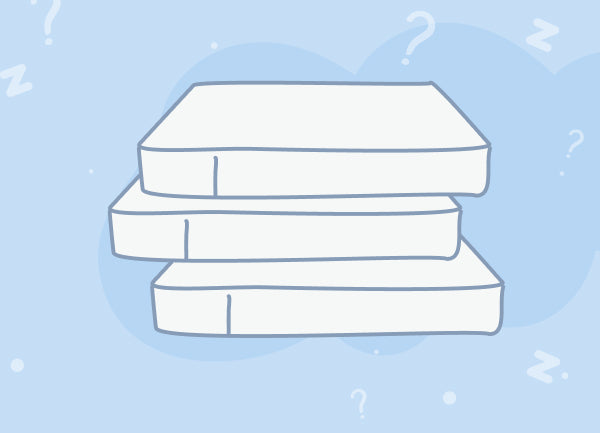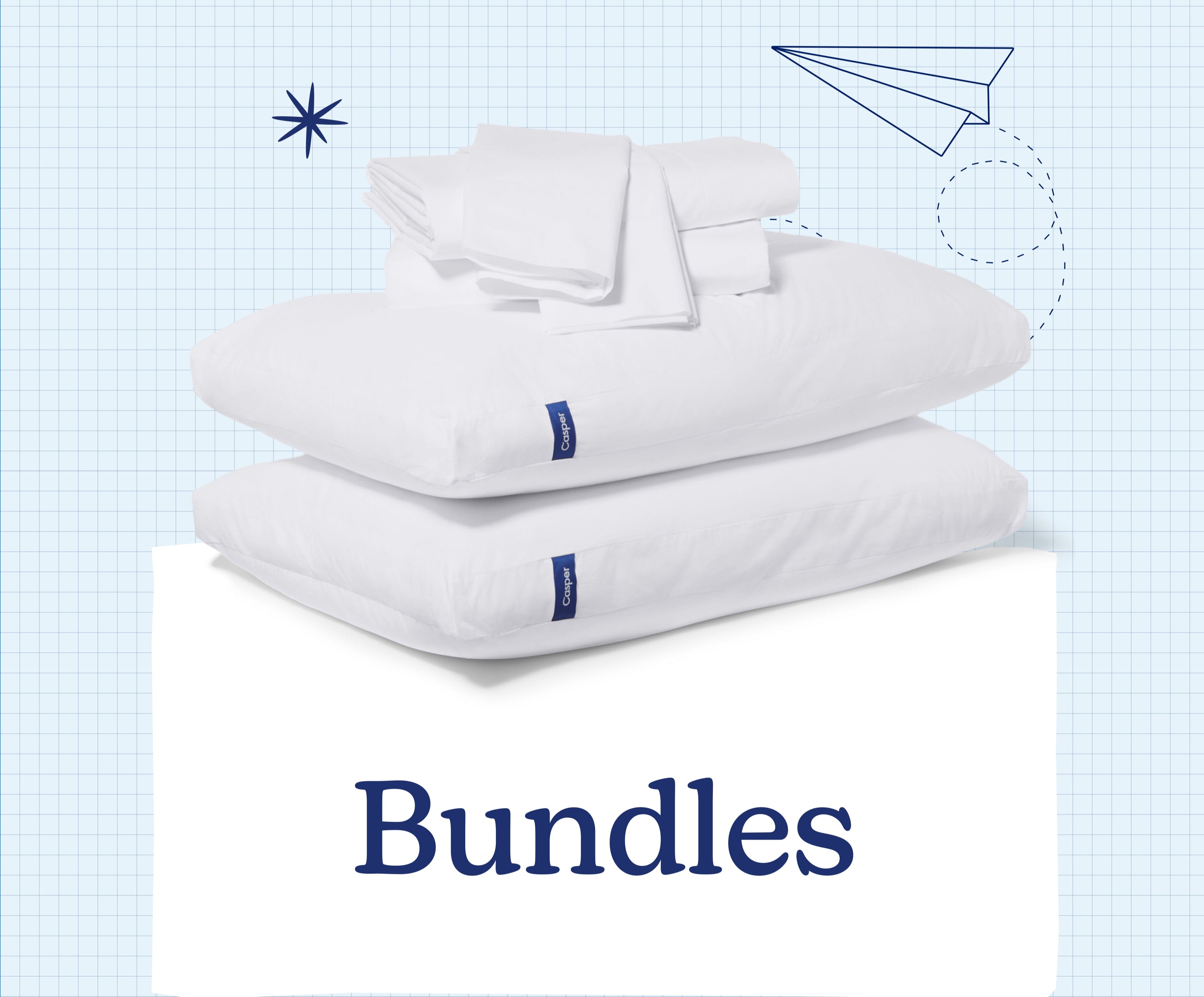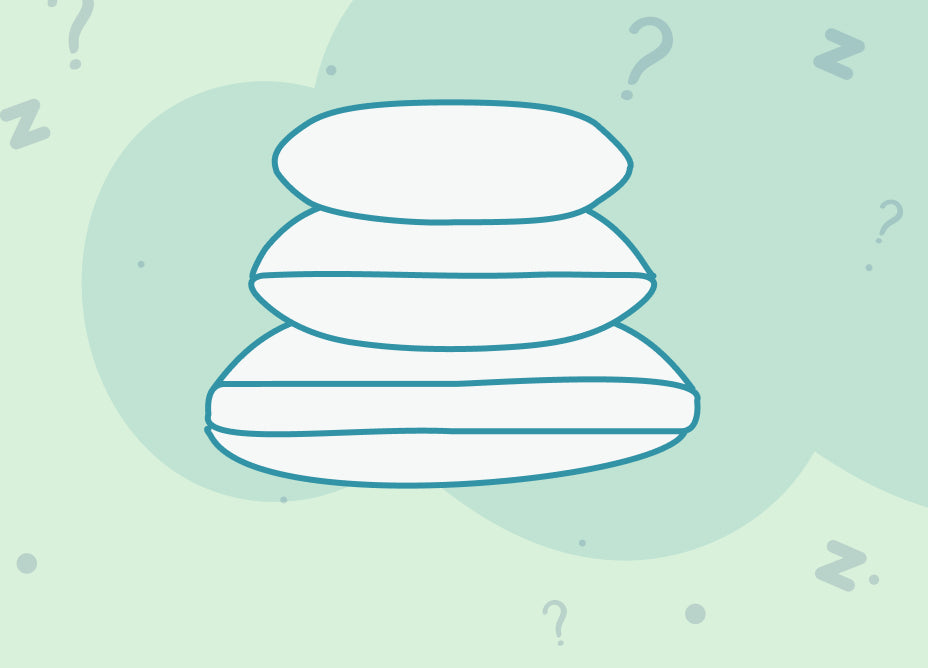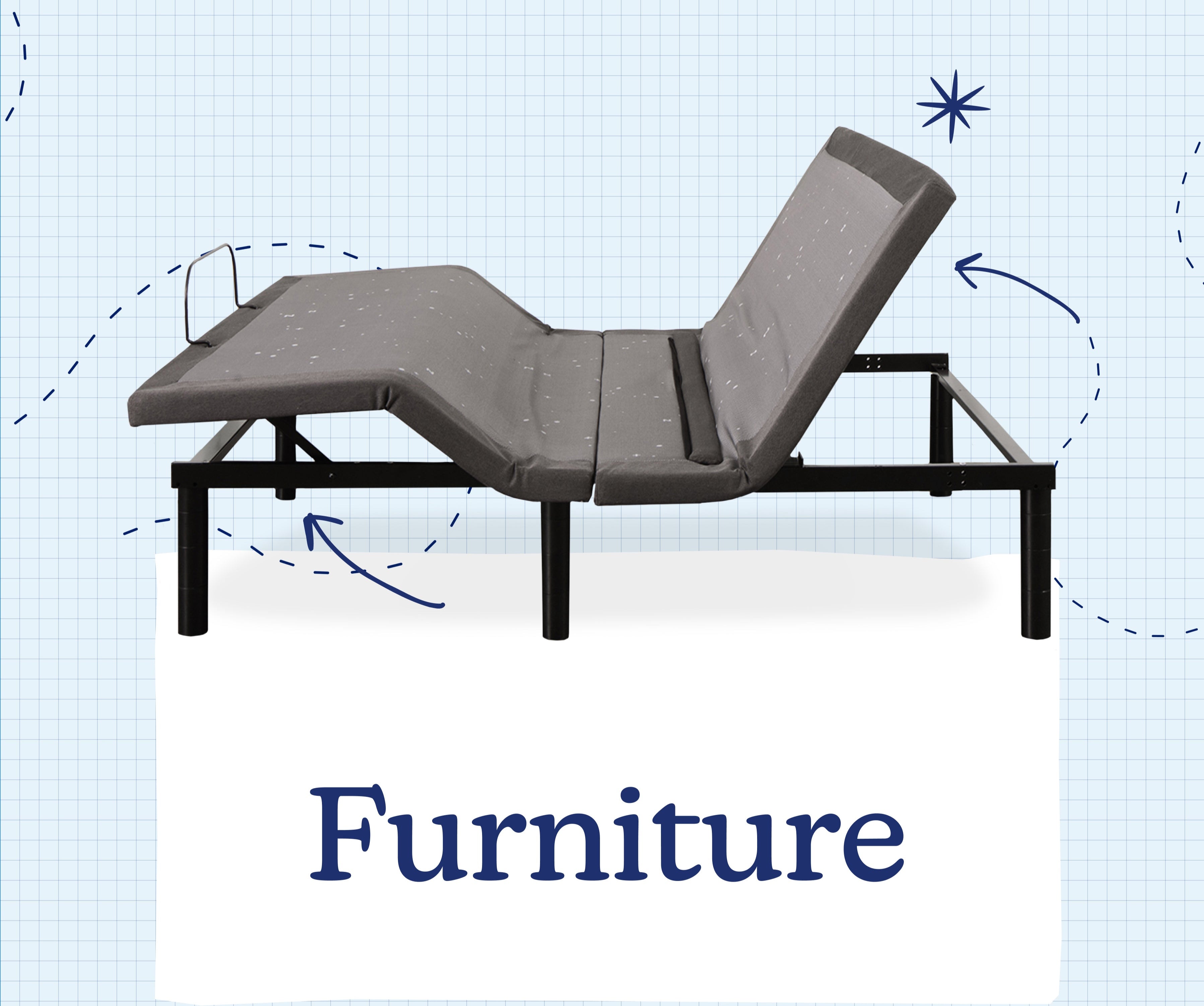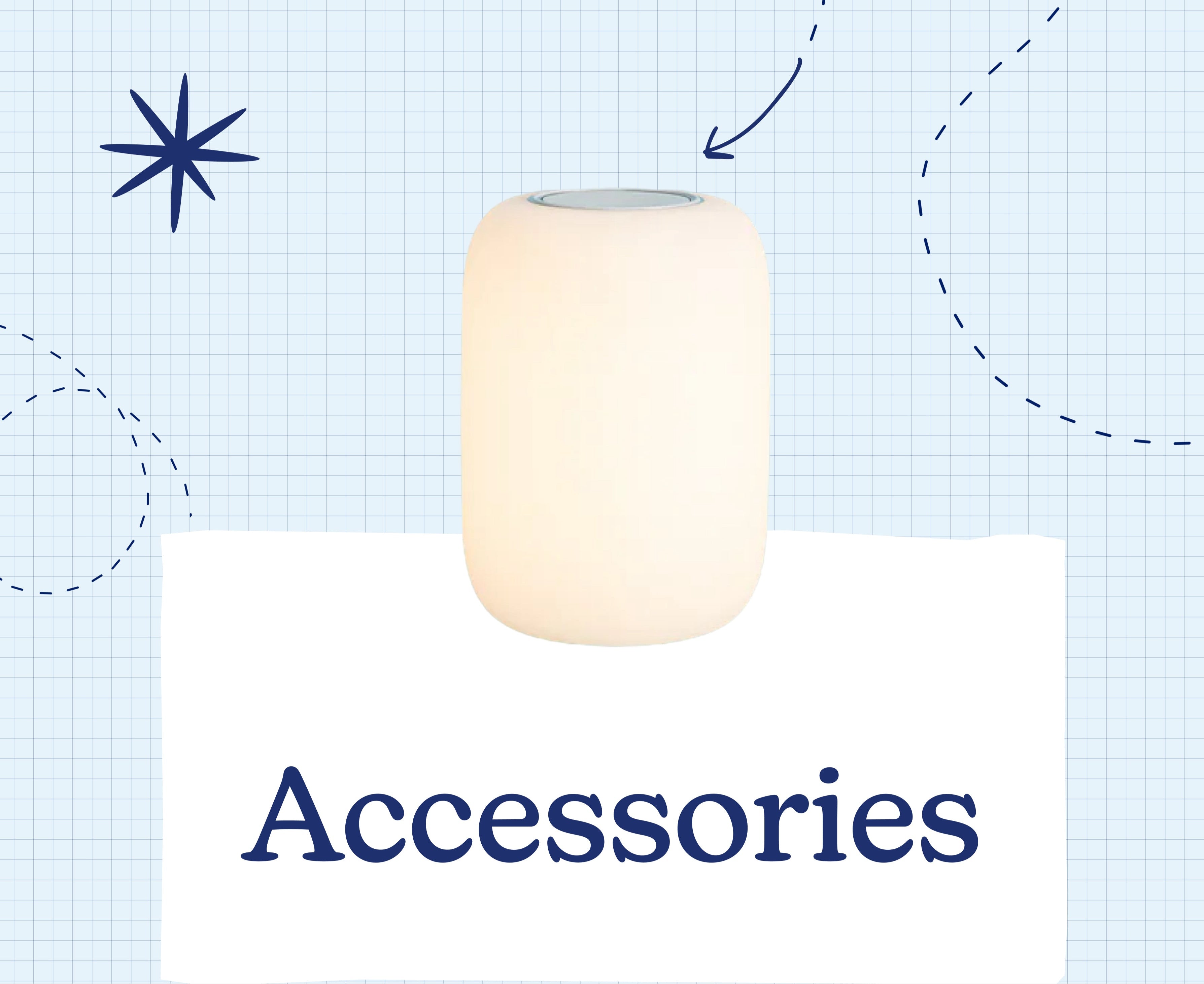Updated Aug 6, 2025
Choosing the right bed isn’t just about what feels best—but also what fits best. And while the variations between mattress sizes might seem minuscule, the differences could have you tossing and turning. So, which option should you choose—a full or a queen-sized bed?
The answer: it depends. When it comes to a full vs. queen size mattress, queen mattresses are a very popular option among couples and typically work best in medium to large bedrooms. However, sometimes a full mattress makes more sense for your needs, especially if you have a smaller space.
To help you find the mattress size that will create the sweetest foundation for slumber, our guide compares everything you need to know about full vs queen mattresses.
Full vs. Queen Dimensions Comparison Chart
| Full Mattress | Queen Mattress | |
|---|---|---|
| Width | 53 inches | 60 inches |
| Length | 75 inches | 80 inches |
| Surface Area | 3,975 inches2 | 4,800 inches2 |
| Cost | Less expensive | More expensive |
| Casper Price | $1,195 | $1,295 |
| Best For | Young adults, couples who like to cuddle, guest rooms | Couples or taller adults who like to sprawl out |
| Bedroom Size | Guest rooms or smaller bedrooms | Primary bedrooms |
Let’s first examine how full vs. queen mattresses compare when it comes to size.
The dimensions of a full size bed are as follows:
- Width — 53 inches
- Length — 75 inches
- Surface area — 3,975 square inches
- Casper One price — $899
- Best for — Young adults, couples who like to cuddle, a guest room
- Bedroom size — Guest rooms or smaller bedrooms
On the other hand, the key dimensions of a queen size bed are:
- Width — 60 inches
- Length — 80 inches
- Surface area — 4,800 square inches
- Casper price — $999
- Best for — Couples or taller sleepers who like to sprawl out
- Bedroom size — Primary bedrooms
Differences Between Full and Queen Beds

While both queen and full-size beds are popular, understanding their key differences can help you decide which fits your lifestyle and bedroom best.
Price
It’s no secret that mattresses can be expensive. Regardless of the brand, a full mattress is going to be cheaper than a queen because of the size difference. This includes accessories as well. The bigger the mattress size, the more expensive it’s going to be.
For example, Casper’s mattress prices range from:
- Full — $899–$3,695
- Queen — $999–$3,795
The price difference between full and queen size mattresses isn’t huge, but it’s something to keep in mind if you’re on a tight budget.
Accessories
Accessories include anything from pillows to an excellent duvet. Because both full-sized beds and queen beds are incredibly common, finding the best sleep accessories for these two mattress sizes should be no problem at all.
However, as we mentioned earlier, you’ll want to keep in mind the price of your accessories. Because a queen-sized bed has larger dimensions, the accessories may be a bit more expensive than full-sized accessories. For example, full-sized sheets will be less expensive than queen-size sheets. Full-sized beds will also generally require fewer pillows (depending on the person).
Some accessories are vital to maintaining the quality of your mattress—such as your bed frame. We don’t recommend putting your mattress on the floor because it can cause molding or other issues. This can even void your warranty from certain manufacturers.
Room Size

It goes without saying that full-sized beds are better for smaller rooms, and queen-sized beds are better for larger bedrooms. Full beds work best in guest rooms or bedrooms around 10 feet by 12 feet. If you have a room smaller than that, a twin-size bed might better fit your room.
Queen beds work best in larger bedrooms that are 12 by 12 feet, but anything above 10 feet by 10 feet should be fine. Anything smaller could make it hard for you to maneuver around your bed, especially if you have lots of furniture.
Versatility
Queen beds give you more space if you love piling on all your favorite throw blankets or you move around in your sleep at night. However, because queen beds are bigger, they give you less floor space in your bedroom.
Full-size beds conserve space in your room so you can maximize your decor. But you won’t be able to fit as many pillows or really splay out—if that’s your thing.
Maneuverability
Because a queen is bigger than a full mattress, it’s going to weigh more. This makes queen size mattresses more difficult to handle if you’re a frequent mover or like to change the layout of your bedroom.
For The One mattress by Casper, the queen weighs 12 pounds more than the full. This might not seem like a lot, but it’s important to consider if you have physical limitations or live in a building without an elevator.
Full vs Queen Size: Pros and Cons
Before making your final choice, it’s helpful to consider the specific pros and cons of full and queen mattresses.
What are the Pros and Cons of a Queen?
Queen beds are the most popular mattress size on the market. At 60 inches wide and 80 inches long, they are larger than a double bed but smaller than a king bed and California king-sized bed.
The advantages of this bed size include:
- Great for couples or single adults
- Works well in a master bedroom
- Easy to find accessories for
If you’re shopping for a queen-size bed, you’ll also want to consider potential drawbacks. Fortunately, the list isn’t long. A queen-size bed may be:
- More expensive than a full
- Heavier than a full
What are the Pros and Cons of a Full?
On the other end of the debate, full-sized beds—also known as “double beds”—are 16 inches wider than a twin bed but smaller than a queen. They’re an excellent choice for guest rooms and work best for a taller sleeper who sleeps alone.
Full-sized beds also offer several advantages. They’re:
- Less expensive than a queen
- Easier to move than a queen
- Easy to find accessories for
However, you also want to consider that a full bed:
- May be too small for couples
- Isn’t enough space for those with large pets or kids
Full vs Queen: How to Choose A Bed Size

Each night, more people in the U.S. sleep on a queen mattress than any other size, thanks to its inviting dimensions and convenient versatility. Roomier than full mattresses but less oversized than kings, queen-size beds are suitable for everyone.
Full-size beds are more than sufficient for most single people and certain couples. The extra inches offered by a queen bed might sound nice, but you may not want or need them for a number of reasons.
So, when should you choose a full-size mattress and when should you choose a queen? Here are some factors to consider:
Sleeper Preference
So, is a full bed big enough for two? Many couples are perfectly cozy on a full mattress. But if one of you is a bed hog, a queen may help keep bedroom disputes at bay. Plus, queen beds offer 750 more square inches of surface area than full beds, so they’re perfect for your kids or pets. On the other hand, why spring for a queen if you’re just going to spend the night wrapped in each other’s arms? In that case, a slightly smaller full is all the space you need.
Solo sleepers who tend to stretch out at night should choose a queen-size bed. However, a full-size bed offers plenty of space for most single people, plus enough room to keep from crowding a small dog or cat if you're a single pet parent.
Body Size
Whether you’re a single sleeper or one half of a duo, if you’re 5’10” or taller, you’ll likely need the extra five inches of legroom you’ll get from a queen bed. If you're on the taller side, don't skimp on bed space—the extra cost and space may be worth a good night's sleep.
Budget
Your budget is another factor to consider when choosing between a full vs. queen mattress, as queen mattresses are more expensive than full. That said, the extra space, enhanced comfort, and longer leg room may be worth the extra money.
However, a full-size bed may be the more budget-friendly option if you’re a young couple who’s just starting out or a cash-conscious single who cares about maximizing savings.
Space Restrictions
Before you go for a queen, you'll want to make sure your bedroom is big enough. Queen-size beds require queen-size bed frames, so make sure your bedroom measures at least 100 to 120 square feet to avoid cramped quarters. If you’re short on space, full-size beds fit nicely in small bedrooms and guest rooms. They’re large enough to accommodate most people comfortably but won’t eat up precious floor space.
Picking a Mattress and Bedding: Next Steps

Now that you’ve narrowed down your size, it’s time to focus on finding the right mattress and bedding to match.
Tips for Choosing the Best Mattress
Once you’ve chosen between a full vs queen bed, you’ll next need to decide what type of mattress you want. Primarily, that means choosing a mattress based on its level of firmness.
The largest factor to consider is your sleep position. Sleep posture influences the zones on your body that need more or less support, so choosing wisely is important for correct spinal alignment and overall comfort.
To that end, here’s how to choose a firmness level based on your sleep position:
- Side sleepers – Medium-soft to medium-firm mattresses offer the right amount of pressure relief where side sleepers need it most: the hips and shoulders.
- Stomach sleepers – If you sleep face-down, a firm mattress will provide consistent support to the lighter and heavier parts of your body and keep your lumbar spine properly aligned. Learn more about the best mattress for stomach sleepers in our blog.
- Back sleepers – Medium-firm to firm mattresses are recommended for back sleepers, depending on how much give you want from a mattress.
How to Choose Bedding for Full and Queen Beds
Whether you choose a full-size or queen-size mattress, you’ll also need to pick out new bedding to go with it. Nothing has the potential to enhance the comfort of a mattress like quality sheets, comforters, pillow types, and more.
When you’re choosing sheets, it’s easy to get hung up on thread count. This term refers to the softness of the fabric, with higher thread counts offering superior softness. Thread counts can run up to 900 or more, but you don’t have to go for the highest count to get the best sheets. A thread count between 300 and 600 is enough for most sleepers.
You’re better off investing your energy into choosing the fabric. Bedding comes in an array of fabric types, each with unique benefits for your sleep. The most common bedding fabrics include:
- Cotton – Soft and lightweight, cotton is a top-tier choice for bedding, especially if you aren’t someone who gets too warm in bed.
- Silk – If you like luxurious fabrics, silk is the way to go. Aside from offering supreme softness, it’s an excellent choice whether the night is cool or warm.
- Bamboo – This natural fiber is soft and excels at moisture-wicking. If you’re someone who gets sweaty at night, this fabric is an ideal choice.
Shopping for a New Full or Queen-Size Mattress: Casper's Options
Finding the perfect mattress size is easier with Casper’s thoughtfully designed full and queen options tailored to fit your lifestyle.
Casper’s Queen Mattresses
Queen mattresses are popular for a reason—who doesn’t like to have some extra space at night? However, some might worry that extra space makes a queen mattress difficult to move.
That’s why Casper ships its mattresses in a box, so you can move and install your new Casper mattress easier than traditional innerspring models. Explore Casper’s queen-sized mattresses to find your new bed today.
Casper’s Full Mattresses
If you’re looking for the perfect mattress for your smaller bedroom, all of Casper’s mattress models include full-size. These mattresses are ideal for maximizing space in a small bedroom without sacrificing your ability to stretch out at night.
Full mattresses are also ideal transitional mattresses for older children, teens, and young adults. You can rely on these models to deliver California King comfort in a full-size bed. Shop Casper’s full-size mattresses for big comfort in a small package.
Find Your Ideal Mattress with Casper
So, how do you choose between a full vs queen mattress? Consider your current sleeping environment. Are you looking for a mattress with more space to show off your favorite quilt? Then a queen mattress is probably the best mattress to go with—especially if you sleep with someone else. It will also allow room for pets and children if you have them.
Are you looking for a bed to fill a guest room? Then opt for a full bed. They’re less expensive while still providing a decent amount of space for single sleepers. They’re also easier to move around if you plan on relocating in the next year or so.
No matter which mattress size you decide on, find the perfect fit with Casper. Our mission is to create better beds for better sleep—and we’re here to support you (just like our beds). For more help choosing the right mattress, try our mattress quiz today.
FAQs
Is a Full Bed the Same Size as a Queen?
A full bed is smaller than a queen. A queen mattress is seven inches wider and five inches longer than a full.
Is a Queen or Full Bed Better?
Queen and full mattresses are both good choices based on your different needs. A Qqueen bed is usually preferred for couples because it has more sleeping space. On the other hand, a full mattress is ideal for singles because you have the space to sprawl out — even if you’re working with a smaller bedroom.
What Is the Most Popular Mattress Size?
Queen mattresses are the most popular mattress size.
Is a Full Bed Big Enough for Couples?
A full mattress will be big enough for couples that like to sleep closely, but a Qqueen mattress offers more versatility and space.
Can You Put Queen Sheets on a Full Bed?
Yes, you can use queen sheets on a full by tucking in the extra fabric. However, for the best fit, it’s ideal to use sheets designed specifically for your mattress size.

